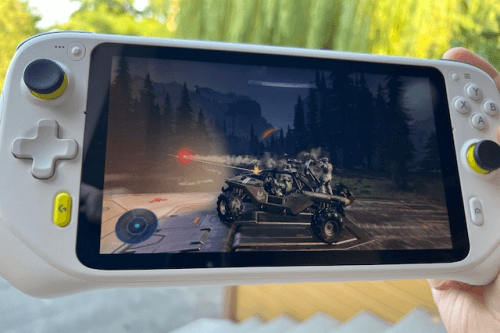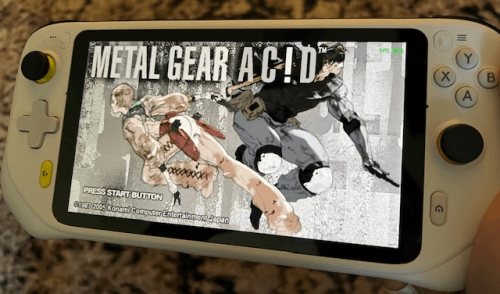It’s been positively ages since I talked about gaming podcasts (well over 10 years, in fact…) but I’m still an avid listener, and I thought it might be fun to go back and update you all on what I’m currently enjoying, and what’s changed since my last post.
The Roster:
First and foremost, I’m absolutely in love with The Computer Game Show (TCGS). I’m not sure how I found out about them, perhaps a random recommendation on Reddit, but in any case, I started listening in 2018 just before one of their infamous Game of the Year specials. How I managed to come out of the other side of that insanity a fan, I’m not sure, but apparently I was entertained enough. My timing was a bit off, because this was around the time David “The Main One” Turner left the show for a while, leaving the other three to fill in without his huge personality. I don’t think I listened to many of those episodes (sorry guys!) but after I found out he was back I started listening regularly again, and I’ve been listening ever since, including the Patreon episodes, and have even started slowly working through their entire back catalog. Their show, with its hilarious British banter and down to earth gaming commentary, is one of the few things I actively look forward to every week.
Speaking of down to earth gaming commentary, Rebel FM is my other main podcast. I’ve been listening to this one since it launched in 2009 (as mentioned in both of my previous posts on podcasts) and I still enjoy the show quite a bit. It’s been interesting to hear Anthony and Arthur mature over the years, and while I feel like the format is a little less interesting these days, with the mild mannered Matt Chandronait typically filling out the third chair, and practically no guests to speak of any more (never mind any of the crazier ones that used to spice things up) I still enjoy listening to these guys. At this point, having listened so damn long, they practically feel like actual friends of mine.
A very recent addition, Random Access Memories is hosted by British TV personality Iain Lee. I was first introduced to Iain by TCGS, who collaborated with him on the occasional video and had him on as a guest host a few times. When he came out with this new retro gaming orientated show, in which he interviews random social media influencer types about a favorite old game of theirs, I had to listen. The show is quick, and usually barely focuses on the game in question at all, rather it mostly features Iain fanboying out on whoever his guest is, and essentially interviewing them about whatever happens to come up.
Speaking of retro gaming, I really have to credit The Retro Hour for inspiring my personal re-invigoration around all things retro computing and retro gaming. I started listening from the beginning when the show was relatively new, and unfortunately got so far behind that I’m still utterly buried in their backlog. As such, I don’t listen to it often, but every time I do, I really, really enjoy it. The formula is simple – two (sometimes three) British retro enthusiasts chatting about retro computing news, before devoting the rest of the episode to a more formal interview with someone of note from the retro computing scene, oftentimes notable developers from the past, including some very big names. Dan is an excellent interviewer, and while Ravi’s interview skills could use some work (fingers crossed he’s improved in newer episodes) together they have a friendly energy and infectiously genuine interest in the topics.
Notable Mentions:
Around the same time I started listening to TCGS I also started listening to Filthy Casuals – a show hosted by three Australian comedian friends who love gaming. While the show is fairly formulaic, with your stereotypical focus on discussing the week’s gaming news and what they’ve been playing, the chemistry between the three hosts and their hilarious banter really turn this one into something far above average. At some point I had less free time to listen to podcasts and ended up dropping this one from my regular rotation, though I still check it out on occasion.
Cane and Rinse is a great podcast where 4 or 5 out of a huge group of revolving guests focus on a particular, usually older game, discussing their opinions and experiences with it. Given how unscripted it is, they do sometimes miss certain points, but that’s also one of the strengths of the show. It’s well produced, rarely wanders too far off topic, and is always a fun listen. Due to my own “patient gaming” habits, I usually only listen to episodes about games I’ve played and/or are particularly interested in to avoid potential spoilers for older games I might get around to one day. There are other, similar podcasts I’ve listened to here and there, such as Dev Game Club, Finish The Fight, and Watch Out for Fireballs! but this is my favorite of the lot.
Revisiting Some Old Favorites:
I continued to listen to The Comedy Button for quite a few years, but eventually the show started to feel incredibly formulaic. While it was always fun, it felt like a lot of the same stories were referenced, the humor never really evolved, and I just got a bit burnt out on it. The crew called it quits in early 2023, but given the random episode they put out last September, will still occasionally get together for the odd reunion episode here and there.
Gamers With Jobs Conference Call was a regular in my rotation for many years, but not unlike Filth Casuals, I dropped it at a time when I had more podcasts than time to listen to them. Going back to it years later, I discovered that the cast was entirely different, and while I’m sure the show is still enjoyable, it felt like an entirely different show to me and I just couldn’t get into it. Bummer.
I sang a lot of praise for Idle Thumbs in my very first podcast post back in 2009. It became one of my favorite podcasts, and I was bummed out when it ended up 2012… and I was pretty damn happy when it came back in 2013. They kept putting out amazing episodes, even coming out with a completely off-topic spinoff show called Important If True, and eventually an entire podcast network, until they went completely radio silent in 2018. All talented game developers, a few of the regular hosts formed Campo Santo games and put out the fantastic Firewatch (which I played later in 2018, making me miss them that much more!) When Campo Santo got bought by Valve, that was the end of the podcast, sadly. I really miss these guys, and if they started putting out episodes again tomorrow, I’d subscribe without hesitation.


